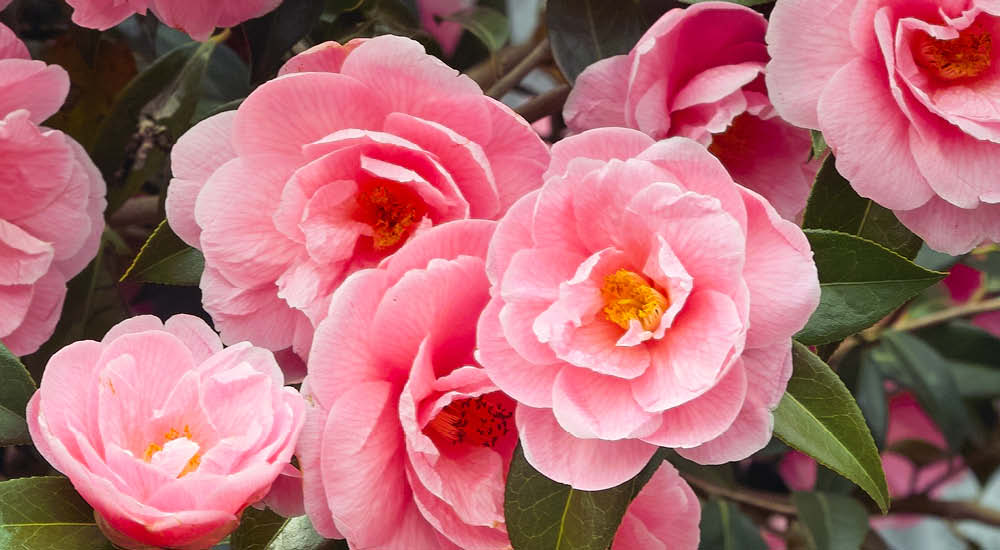Camellias are one of the most popular spring-flowering shrubs, providing a vivid splash of colour when little else is in bloom.

Naturally occurring in the Himalayas, Japan and Indonesia, Camellia are natives of deciduous woodland. The number of different types is often debated but it’s understood that there are up to 300 species, with around 3,000 cultivated hybrids.
In the UK they are ideal for a lightly shaded area or woodland garden, where their flower’s colour palette is dominant in pinks, reds and white. There are two groups available which flower at different times, either autumn into winter or from late winter into early spring, giving an opportunity to enjoy their exquisite flowers in succession if so desired.
There are also many flower forms available, from single, semi-double, anemone, peony, and formal double. We recommend growing single flowered varieties for a wildlife garden, as they are more friendly for pollinating insects. The other types are highly ornamental and pair well with oriental shrubs or architectural conifers.
All are easy to grow in large containers of ericaceous (acidic) potting compost, but the dwarf varieties really do excel when grown in this way. Their compact evergreen form produce an abundance of flowers, making them perfect for a shady spot on a patio or along garden paths. All Camellia prefer acidic soil, so look out for bags of ericaceous compost, or make your own from well-rotted leaf mould. This compost is also suitable for blueberries, azaleas, rhododendrons and acers too.
Collected rainwater is ideal for watering but they can survive on tap water for a month or two in summer. Feed them from spring to early summer with a slow-release feed formulated for acid-loving plants and they'll keep rewarding you year on year.
Camellias do not need to be pruned regularly but if they do outgrow their allotted space, trim them into shape after flowering. Hard pruning is best carried out in March, but it will be a couple of years or more before they flower well again.
- Low maintenance plants
- Thrive in humus rich acid soils (ericaceous)
- Prefers a lightly shaded position.
- Feed with an ericaceous fertiliser in spring
- Mulch and water in the summer


